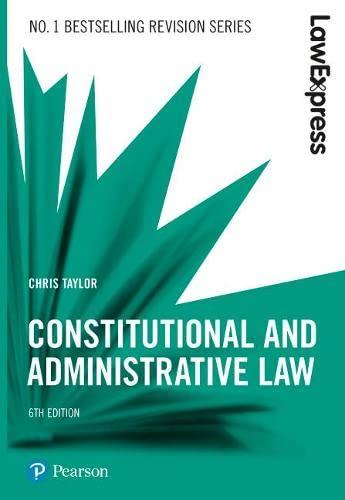Question
Negotiable Instruments Law 1.) I. The notice of dishonor may be in writing or merely oral, and may be given in any terms which sufficiently
Negotiable Instruments Law
1.) I. The notice of dishonor may be in writing or merely oral, and may be given in any terms which sufficiently identify the instrument, and indicate that it has been dishonored by non-acceptance or non-payment.
II. Notice of dishonor must be given by delivering it personally only.
a. Both are false
b. Only II is true
c. Both are true
d. Only I is true
2.) Notice of dishonor is not required to be given to the drawer in either of the following cases, except:
a. Where the drawer and drawee are the same person
b. Where the drawee has countermanded payment.
c. When the drawer is the person to whom the instrument is presented for payment.
d. Where the drawer has no right to expect or require that the drawee or acceptor will honor the instrument.
3.) I. When the day of maturity falls upon Sunday or holiday, the instrument is payable on the next succeeding business day.
II. Instruments falling due or becoming payable on Saturday are to be presented for payment on the next succeeding business day, except instruments payable on demand which may, at the option of the holder be presented for payment before twelve o'clock noon on Saturday when that entire day is not a holiday.
a. Both are false
b. Only II is true
c. Both are true
d. Only I is true
4.) I. Where the waiver of notice of dishonor is embodied in the instrument itself, it is binding upon all parties.
II. Where the waiver of notice of dishonor is written above the signature of an indorser, it binds him only.
a. Both are false
b. Only II is true
c. Both are true
d. Only I is true
5.) I. Presentment for payment is not required in order to charge the drawer where he has no right to expect or require that the drawee or acceptor will pay the instrument.
II. Presentment is not required in order to charge an indorser where the instrument was made or accepted for his accommodation and he has no reason to expect that the instrument will be paid if presented.
a. Both are false
b. Only II is true
c. Both are true
d. Only I is true
6.) I. The instrument must be exhibited to the person from whom payment is demanded.
II. When the instrument is paid after presentment for payment, it must be delivered up to the party paying it.
a. Both are false
b. Only II is true
c. Both are true
d. Only I is true
7.) Presentment for payment, to be sufficient, it must be made, except:
a. At a reasonable hour on a business day.
b. To the person secondarily liable on the instrument, or if he is absent or inaccessible, to any person found at the place where the presentment is made
c. At a proper place.
d. By the holder, or by some person authorized to received payment on his behalf
8.) I. Notice of dishonor is not dispensed with even, after the exercise of reasonable diligence, it cannot be given to or does not reach the parties to be charged.
II. Delay in giving notice of dishonor is excused when the delay is caused by circumstances beyond the control of the holder and not imputable to his default, misconduct, or negligence.
a. Both are false
b. Only II is true
c. Both are true
d. Only I is true
9.) I. When the instrument is dishonored by non-payment, no immediate right of recourse to all parties secondarily liable thereon shall accrue to the holder.
II. Payment is made in due course when it is made at or after the maturity of the payment to the holder thereof in good faith and without notice that his title is defective.
a. Both are false
b. Only II is true
c. Both are true
d. Only I is true
10.) I. A written notice of dishonor must be signed, and an insufficient written notice may be supplemented and validated by verbal communication.
II. A misdescription of the instrument does not vitiate the notice of dishonor unless the party to whom the notice is given is in fact misled thereby
a. Both are false
b. Only II is true
c. Both are true
d. Only I is true
Answer the following and explain!
Step by Step Solution
There are 3 Steps involved in it
Step: 1

Get Instant Access to Expert-Tailored Solutions
See step-by-step solutions with expert insights and AI powered tools for academic success
Step: 2

Step: 3

Ace Your Homework with AI
Get the answers you need in no time with our AI-driven, step-by-step assistance
Get Started


